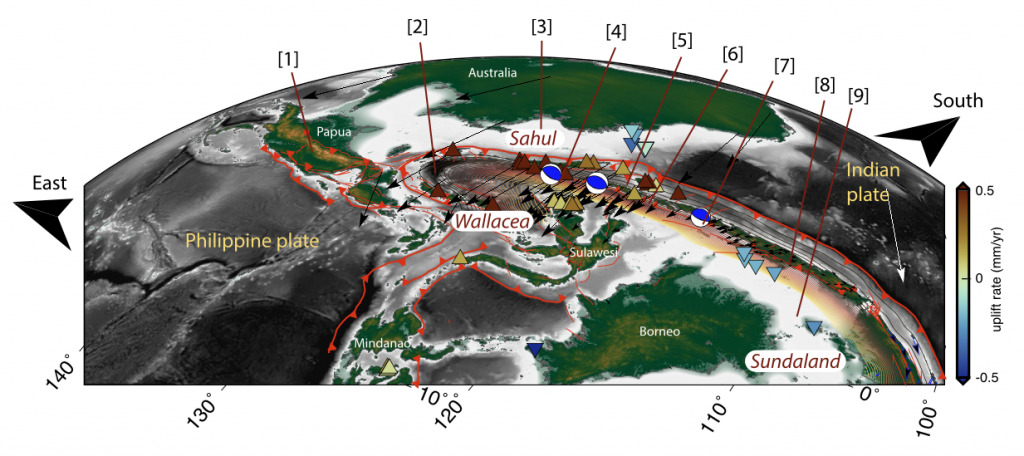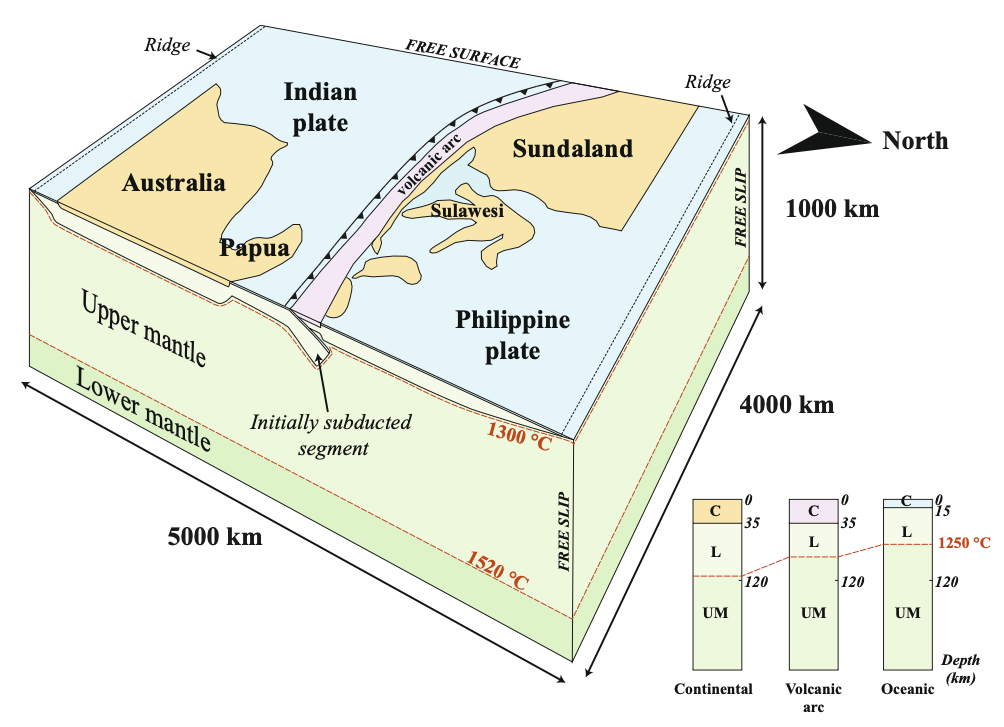
How can the sluggish, long-wavelength mantle convection be expressed by so many time and space scales of morphotectonic activity? To investigate these relationships, we explore the Java-Banda subduction zone, where geodynamic records cluster. In the far-East Tethys, the exceptionally arcuate Banda subduction zone circumscribes the deepest oceanic basin on Earth, seismotectonic activity slices the upper plate more efficiently than anywhere else, and uncommonly vast expanses of continents are flooded in Sundaland and Northern Australia. By comparing numerical simulations of subduction dynamics to a set of independent observations, we reveal the many facets of tectonic and physiographic changes that the sole docking of the Australian continent onto the subduction zone triggered. While mantle flow remains slow and long-wavelength at depth, intense tectonic activity, and dynamic uplift and subsidence profoundly rework the physiography at many spatial scales. These results demonstrate that a modest disruption in the slow geodynamic tempo may trigger manifold morphotectonic disturbances.
Husson, L., Riel, N., Aribowo, S., Authemayou, C., de Gelder, G., Kaus, B. J. P., et al. (2022). Slow geodynamics and fast morphotectonics in the far East Tethys. Geochemistry, Geophysics, Geosystems, 23, e2021GC010167. https:// doi.org/10.1029/2021GC010167
![]()

